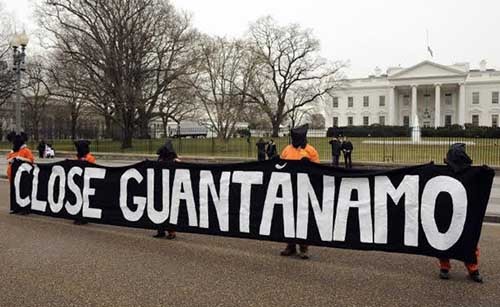
November 9, 2015
On the campaign trail in 2008, President Obama made a pledge to close the Guantánamo Bay Detention facility. Obama is nearing the end of his presidency and the remaining prisoners at the detention facility have not been transferred to U.S. prisons and the facility has not been closed. Supposedly, the Obama administration will soon set forth yet another plan to close Guantánamo.
Again, there is strong resistance to closing Guantánamo. The recent House defense bill would bar Obama from moving prisoners from Guantánamo to U.S. prisons. In response, Obama has threatened to use his executive authority if Congress won’t act to close the prison. Senator Pat Roberts (R-KS) has placed a hold on Eric Fanning, Obama’s nomination for Secretary of the Army, in an attempt to prevent the president from bypassing Congress to close the prison.
As of November 4, 2015, there were 112 prisoners still held at Guantánamo. Of these 112, 49 are on indefinite detention without charge or trial probably because they are deemed too risky to release but not feasible to prosecute because torture was used. Holding prisoners indefinitely without charges is a clear violation of international law.
The Senate Torture report confirms that Guantánamo was a place of torture and indefinite detention, and continues to be an international embarrassment.
Opponents of closing the Guantánamo Bay Detention facility do not want “terrorists” on U.S. soil. Yet, during World War II, the U.S. housed, fed, and worked over 425,000 German POWs in 700 camps in 46 states with little or no risk to the populace. Most of the camps were low to medium security camps, not prisons, although some of the camps had to be designated “segregation camps,” used to separate the Nazi “true believers” from the rest of the prisoners. Of the 425,000 POWs held in U.S. prison camps, only 2,222 – less than 1 percent – attempted escape with most quickly rounded up.
Guantánamo prisoners, on the other hand, would be sent to medium, high, or even so-called supermax security prisons, where the chance of escape would be minimal.
It is time for President Obama and Congress to agree on a plan to quickly release the remaining prisoners or bring them to a speedy trial, close Guantánamo, and then return Guantánamo Bay to Cuba. However, given Congressional resistance, Obama will have to use his executive authority to close Guantánamo.


 The Hunger Site
The Hunger Site
No Comments
Comments for Closing Guantánamo are now closed.